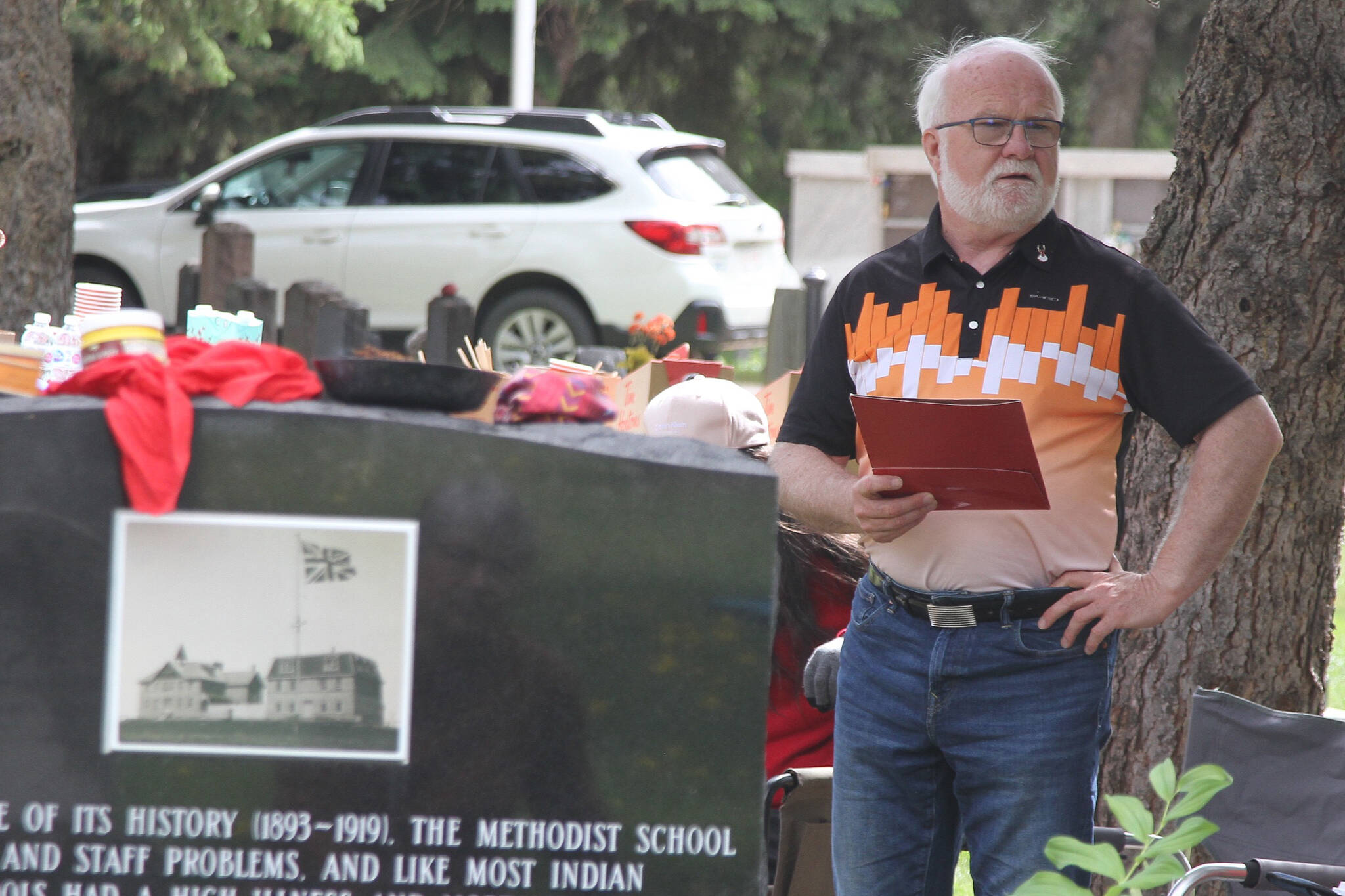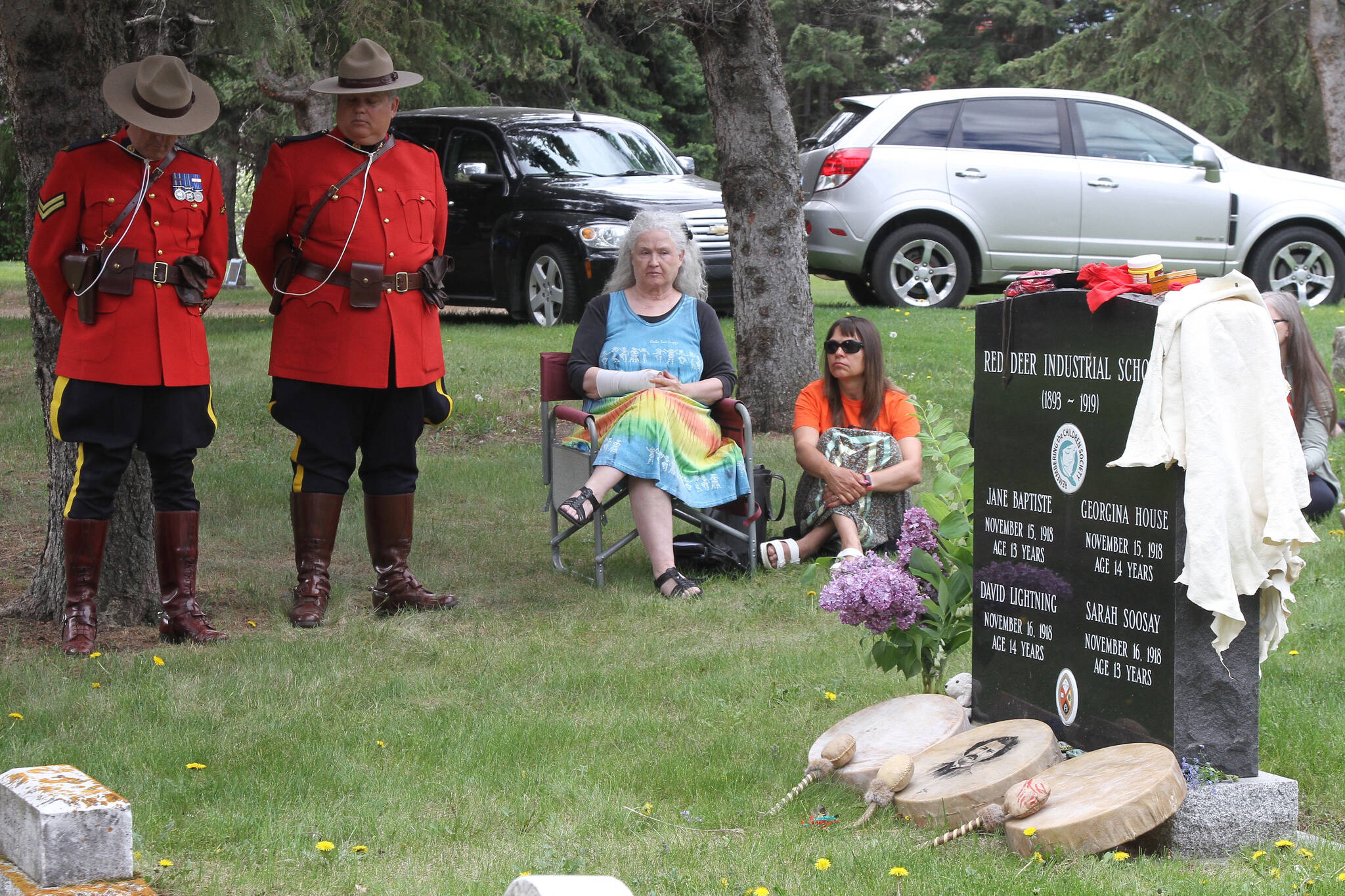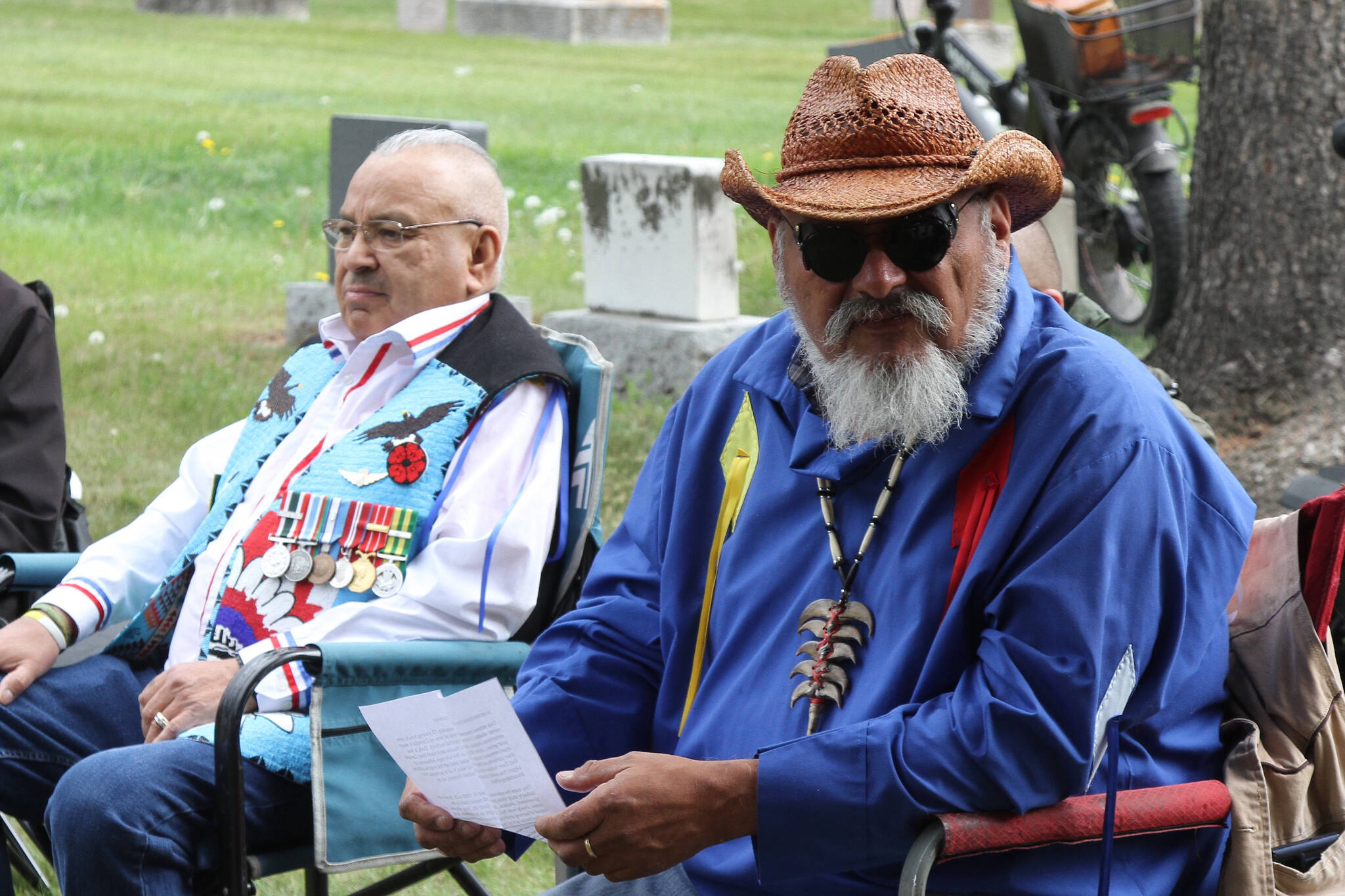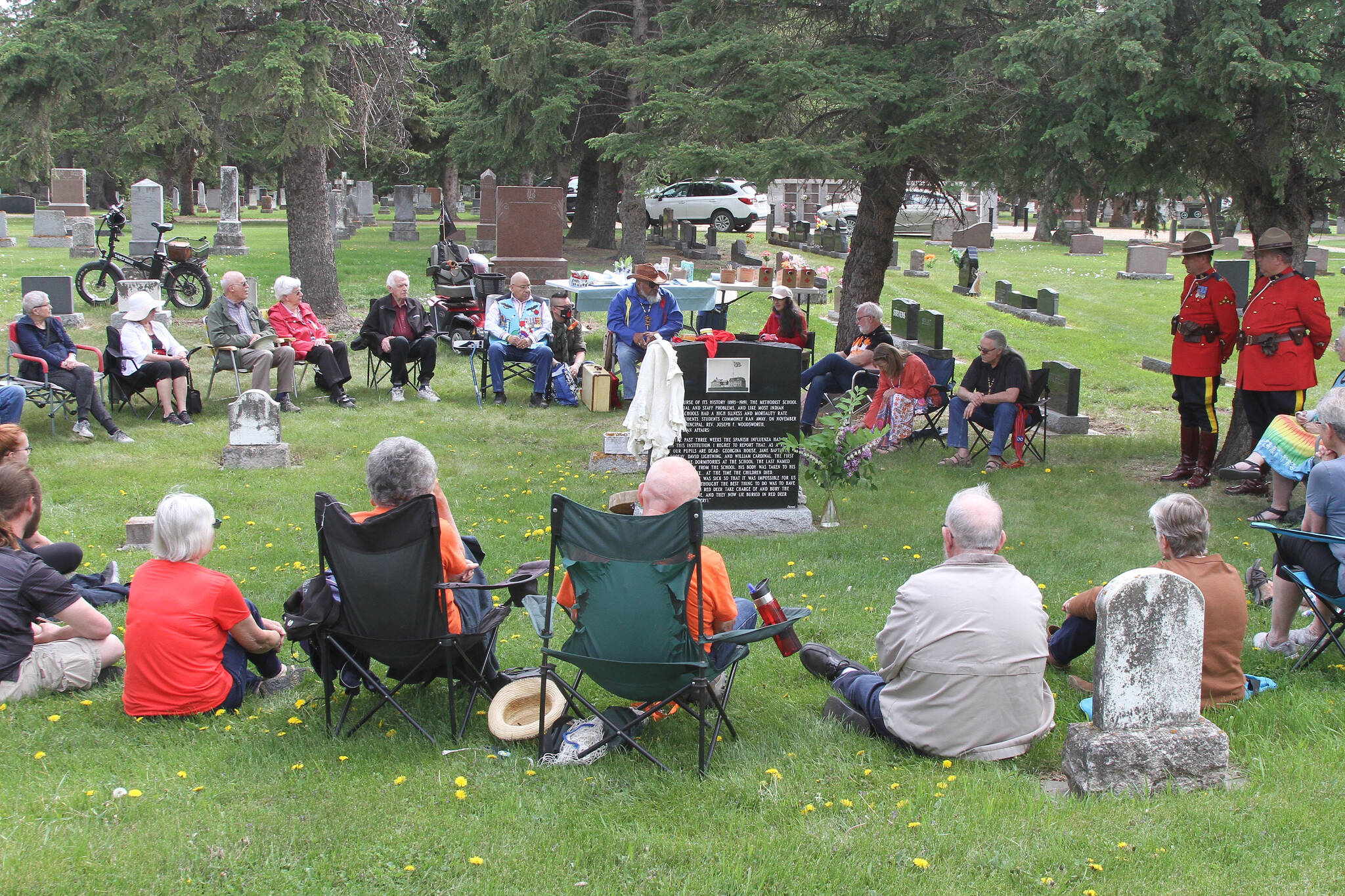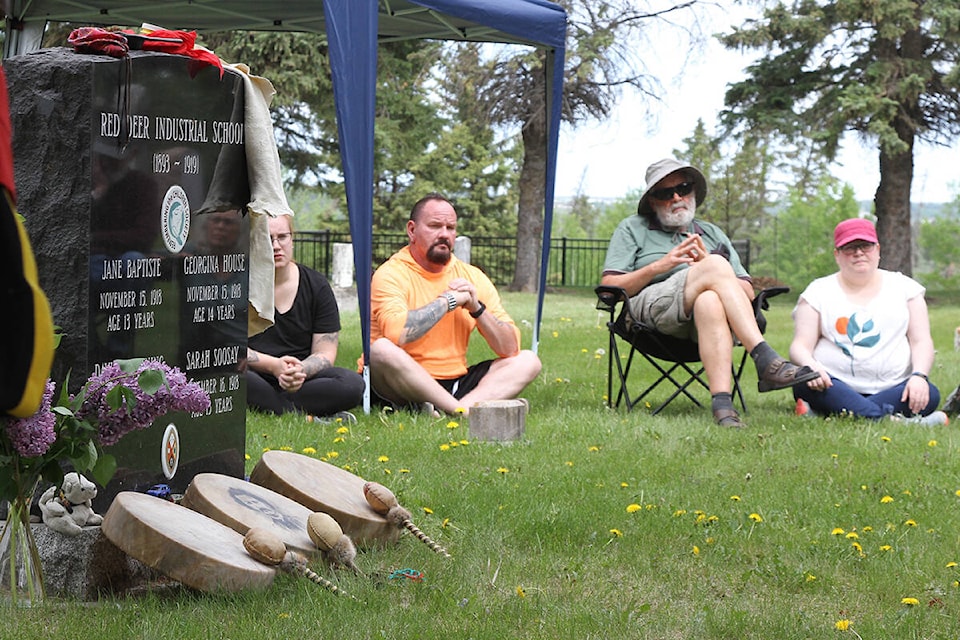Red Deerians gathered to remember of the lives lost at residential schools Saturday morning.
Dozens formed a circle around a memorial stone for four First Nations children, as the Remembering the Children Society hosted the ceremony at the Red Deer Cemetery.
The children listed on the memorial stone – David Lightning, Georgina House, Sarah Soosay and Jane Baptiste – are four of 70 who died at the Red Deer Industrial School.
“After John A. (MacDonald) did his racist rant, saying ‘You’ve got to take the children away from the savage influence of the parents,’ this was one of the first schools that were built,” said Lyle Keewatin Richards, chairman of the society.
“It was terrible. The ventilation was awful, the heating was awful, the sanitation was awful, and on and on. We ended up with one of the worst schools.”
The Red Deer Industrial School had one of the highest mortality rates before closing in 1919.
RELATED: Ground-penetrating radar survey done this week at former Red Deer residential school site
This past October, a ground-penetrating radar survey was done at the residential school site. Richards said the report came back inconclusive.
“It’s going back to the elders on the seven First Nations that are involved with it,” Richards said, adding those elders will decide what the next steps will be.
The underground radar survey was conducted by expert Kisha Supernant, of the University of Alberta’s Institute of Prairie and Indigenous Archaeology. Funding to cover the $330,000 cost was provided by the provincial government’s Heritage Preservation Partnership Program.
In 1987, David Lightning’s brother approached Richards and asked him to find where David was buried. Richards, who was working for the Red Deer Museum at the time, discovered the four were buried at the Red Deer Cemetery.
“Ever since then we were trying to find somebody to help out with this because I couldn’t do it all myself. Sunnybrook United Church … put together a committee in 2005 and the Remembering the Children Society became a thing in 2011,” he said.
Red Deer Mayor Ken Johnston has been working with the society since 2013, when he was a city councillor. He said Saturday’s ceremony was bitter-sweet.
“I say sweet in the sense that we’re now coming to a place where we can remember the children and give them the dignity they didn’t have back in these years,” Johnston said.
“And it’s certainly bitter when you think that we’ve still got a lot of work to do. So many grave sites are being discovered across the country and that sort of brings back that trauma and loss.”
sean.mcintosh@reddeeradvocate.com
Like us on Facebook and follow us on Twitter
